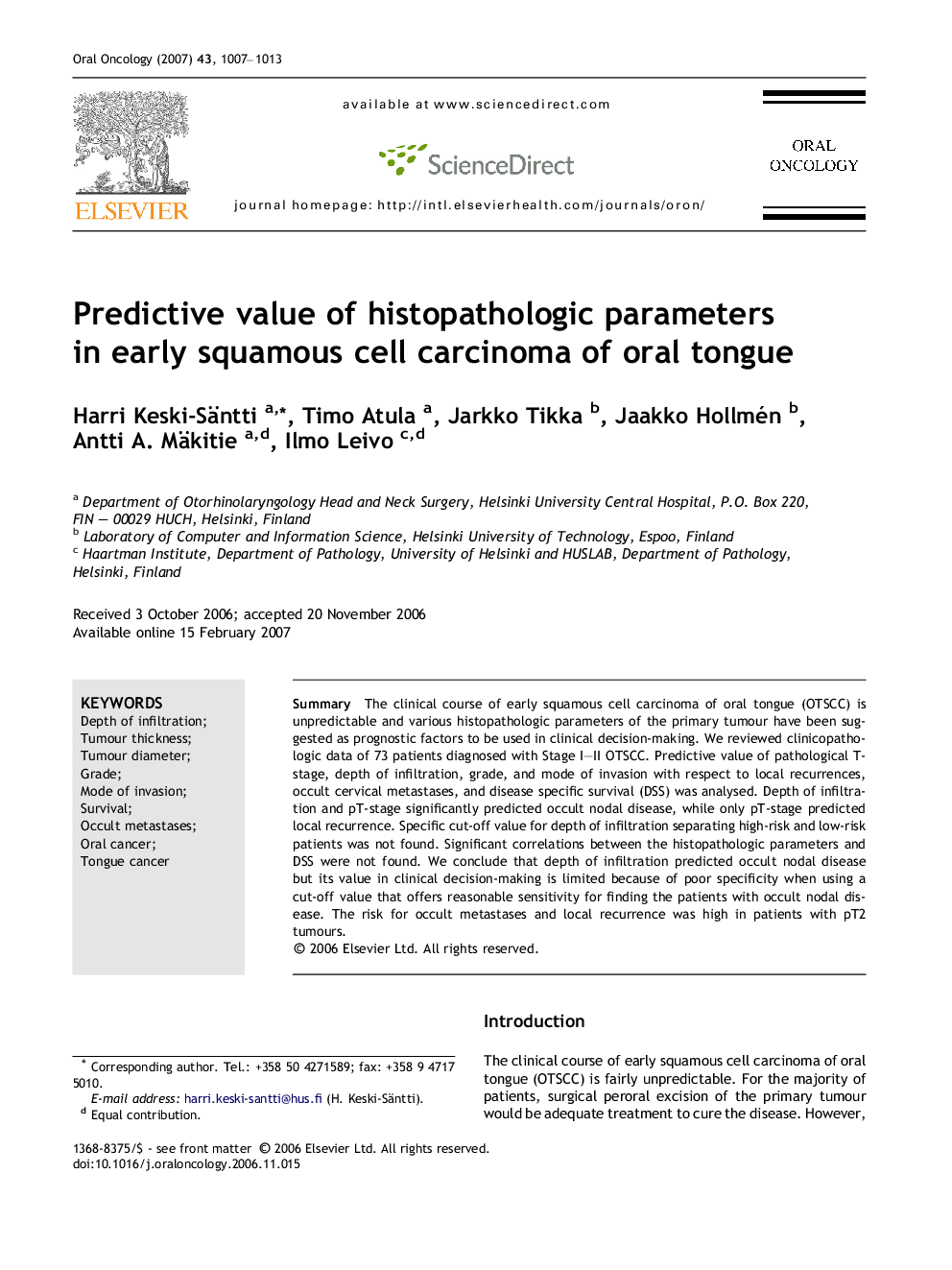| Article ID | Journal | Published Year | Pages | File Type |
|---|---|---|---|---|
| 3165695 | Oral Oncology | 2007 | 7 Pages |
SummaryThe clinical course of early squamous cell carcinoma of oral tongue (OTSCC) is unpredictable and various histopathologic parameters of the primary tumour have been suggested as prognostic factors to be used in clinical decision-making. We reviewed clinicopathologic data of 73 patients diagnosed with Stage I–II OTSCC. Predictive value of pathological T-stage, depth of infiltration, grade, and mode of invasion with respect to local recurrences, occult cervical metastases, and disease specific survival (DSS) was analysed. Depth of infiltration and pT-stage significantly predicted occult nodal disease, while only pT-stage predicted local recurrence. Specific cut-off value for depth of infiltration separating high-risk and low-risk patients was not found. Significant correlations between the histopathologic parameters and DSS were not found. We conclude that depth of infiltration predicted occult nodal disease but its value in clinical decision-making is limited because of poor specificity when using a cut-off value that offers reasonable sensitivity for finding the patients with occult nodal disease. The risk for occult metastases and local recurrence was high in patients with pT2 tumours.
